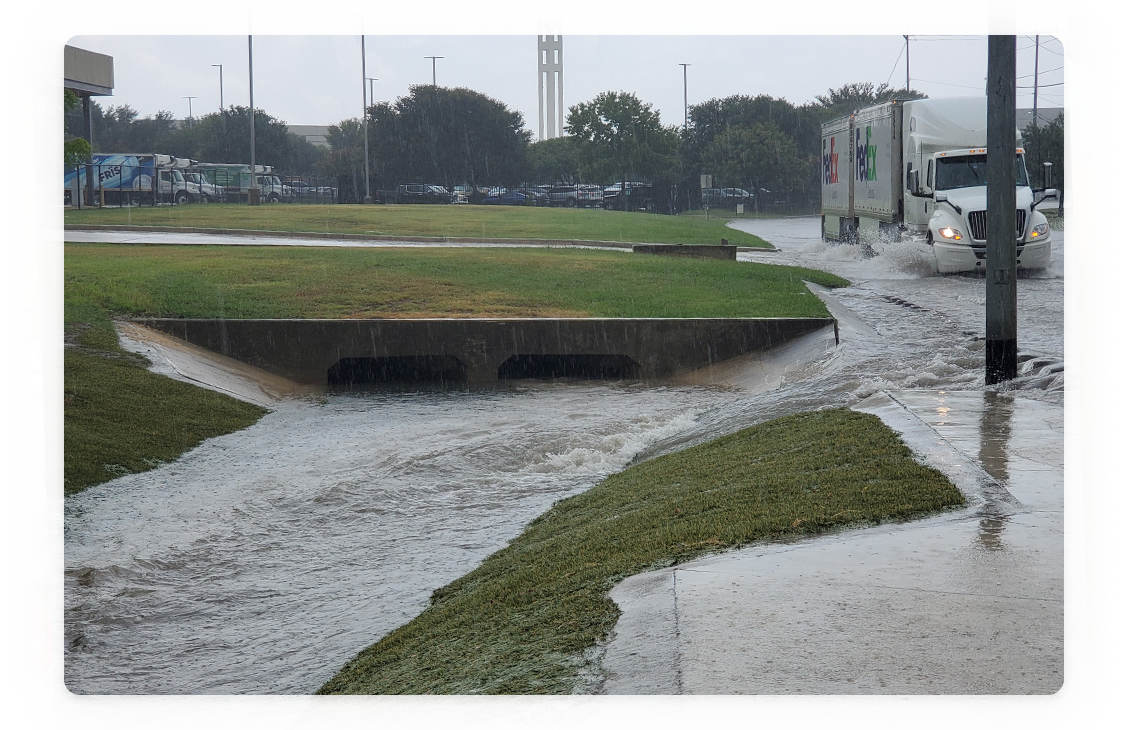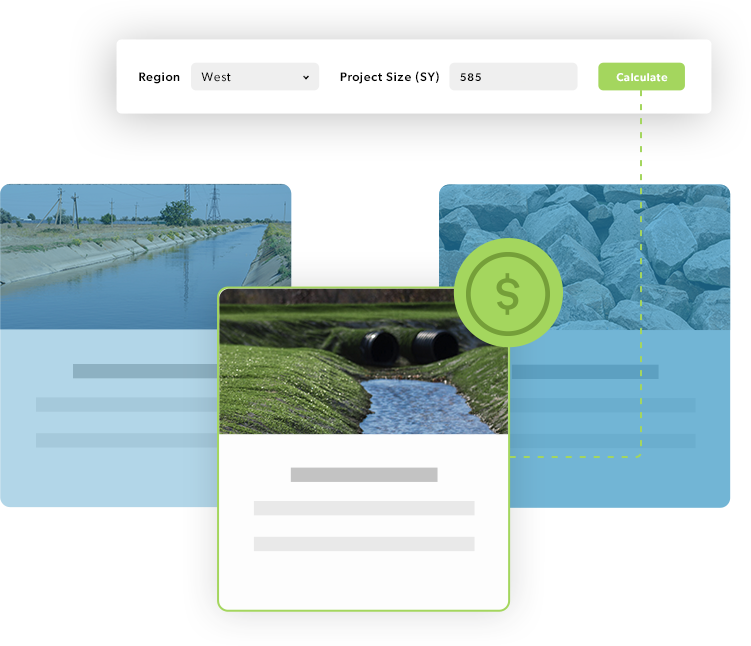
A Cost Analysis on Concrete Paving and Rip Rap for Slope and Channel Stabilization Projects.
In civil engineering and construction, slope and channel stabilization are pivotal operations to prevent soil erosion and landslides, manage waterways, and ensure the overall integrity of a project. Among the many techniques available, Concrete Slope and Channel Paving, Concrete Rip Rap, and Stone Rip Rap emerge as frequently considered options due to their effectiveness. However, beyond their common goal of maintaining structural stability, these methods present different cost implications that can significantly impact project budgeting and outcomes.
This article will explore the cost considerations associated with stabilizing slopes and channels using Concrete Paving, Concrete Rip Rap, and Stone Rip Rap. By delving into in-depth cost analysis, we aim to provide valuable insights and guidance when choosing among these techniques, as well as the consideration of alternative methods for their slope and channel stabilization initiatives.
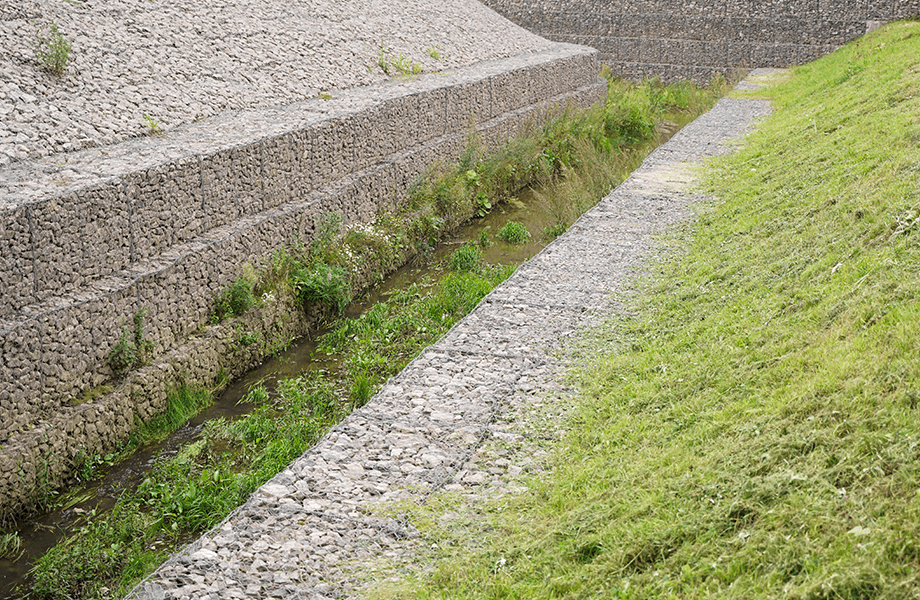
Slope stabilization refers explicitly to methods to prevent soil erosion on slopes, such as embankments, hillsides, or any inclined ground. Techniques used in slope stabilization can range from vegetative methods, like planting erosion-resistant plants, to structural methods, such as constructing retaining walls and ground anchors or using concrete or rip-rap (rock or other material) to armor the slope.
On the other hand, channel stabilization refers to measures taken to control water movement in a defined, open channel, such as a river, stream, or man-made drainage ditch. Channel stabilization aims to prevent erosion of the channel sides and bed, which could lead to instability, flooding, and other environmental issues. Concrete linings, rip rap, or vegetative covers are standard methods used to stabilize channels.
Both slope and channel stabilization play a crucial role in maintaining the integrity of civil infrastructure, reducing environmental impact, and safeguarding human lives and property from potential natural hazards.
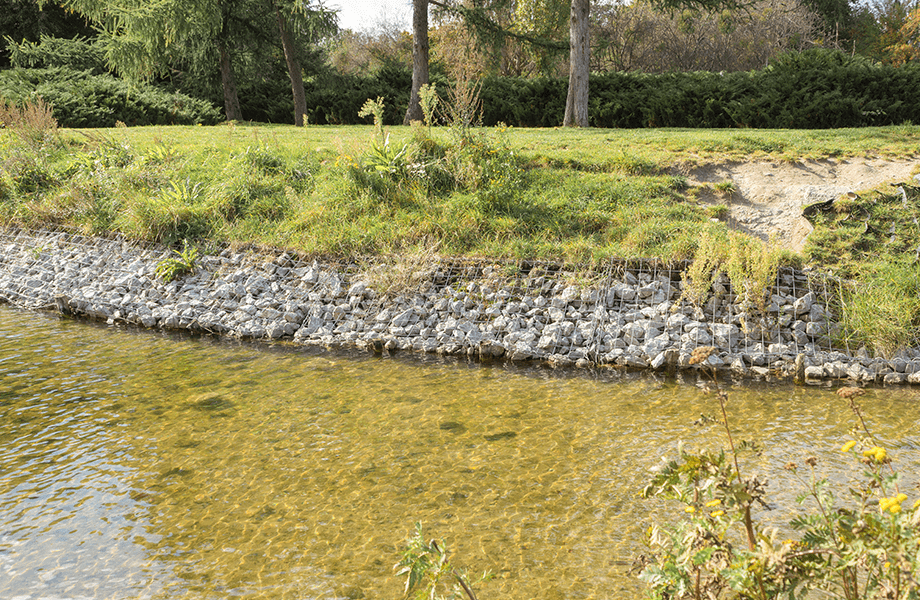
Slope and channel stabilization is typically required under the following circumstances:
Steep Slopes: Whenever there is a steeply inclined surface, whether natural or man-made, slope stabilization is often necessary to prevent soil erosion or landslides. This can apply to various landscapes, including hillsides, road cuttings, and embankments around construction projects.
Erosion Prone Areas: Areas prone to high wind or water erosion, often due to climatic conditions or soil type present, may need slope or channel stabilization. This can also apply to regions with heavy rainfall or frequent flooding.
Construction Adjacent to Water Bodies: When construction projects are near rivers, streams, or other water bodies, channel stabilization becomes crucial to control water flow, reduce erosion, and protect the structural integrity of the project.
Large-Scale Land Clearing: In cases where large areas of land are cleared for construction or agriculture, the risk of soil erosion significantly increases. Here, slope and channel stabilization can play a vital role in maintaining soil stability.
Poor Soil Quality: Soils with low cohesion, high sand content, or poor compaction often lack the natural ability to withstand the forces of erosion. In such scenarios, stabilization measures are necessary.
Infrastructure Protection: For the protection of existing or planned infrastructure like roads, bridges, buildings, and utility lines, slope, and channel stabilization is often required to prevent the potentially devastating impacts of landslides or erosion.
By recognizing these conditions and implementing appropriate stabilization measures, engineers can help to ensure safety, protect the environment, and enhance the longevity of related civil infrastructure.
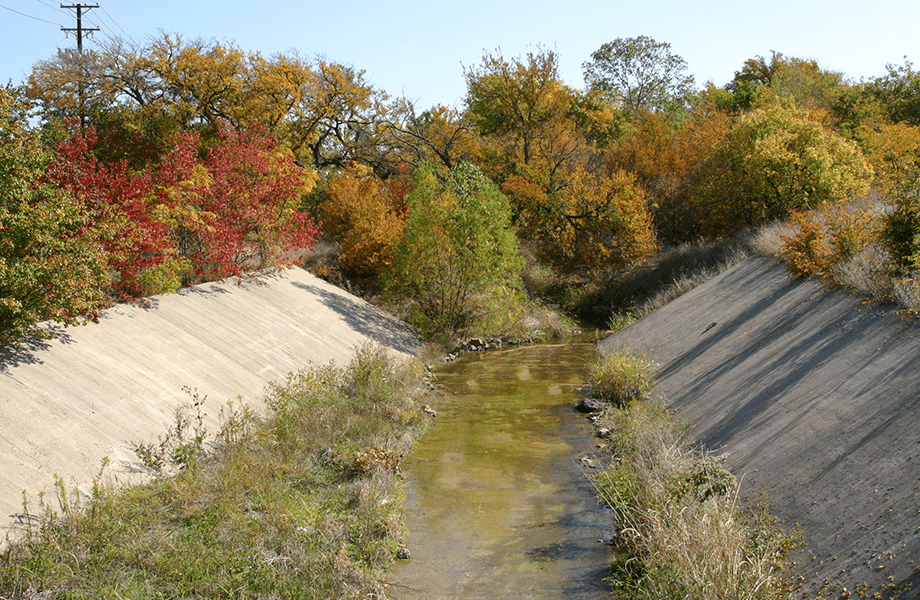
Common slope and channel stabilization solutions include retaining walls, permanent erosion control solutions, such as turf reinforcement mats, concrete slope, and channel paving, stone rip rap, concrete rip rap, and soft and hard armor vegetation solutions. With all of these options, selection depends on the site's specific conditions, including soil type, slope gradient, climate, and cost considerations.
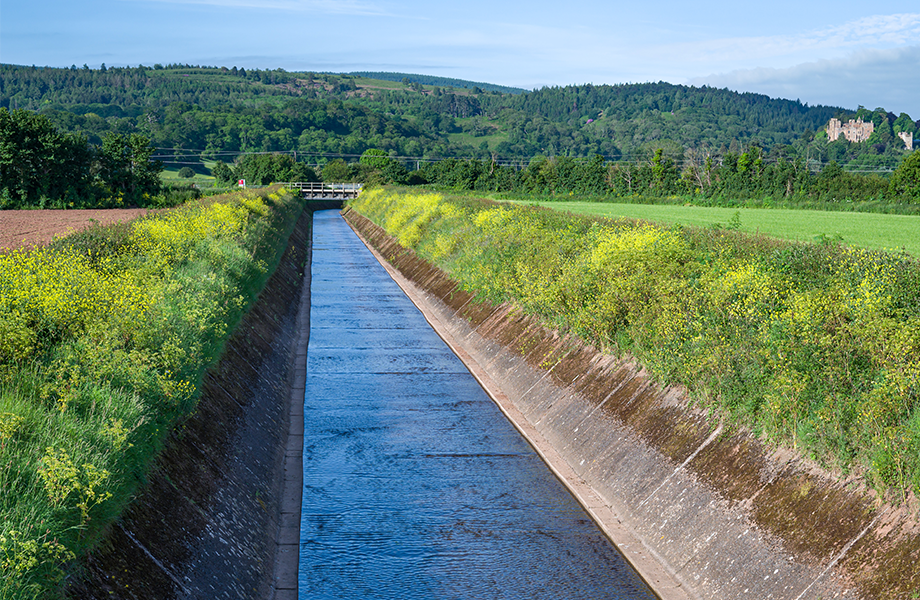
Concrete Slope and Channel Paving is a slope and channel stabilization method involving using concrete to create a continuous, rigid surface on slopes or within channels. The concrete paving acts as a protective layer, preventing erosion and maintaining the stability of the underlying soil. It offers durability, resistance to high flow velocities, and precise design and installation capabilities. While it may have higher upfront costs compared to other stabilization methods, Concrete Slope and Channel Paving is known for its low maintenance requirements and long lifespan, making it a cost-effective solution in the long run. However, it can be visually intrusive, restrict vegetation growth, and may contribute to increased runoff and flooding.
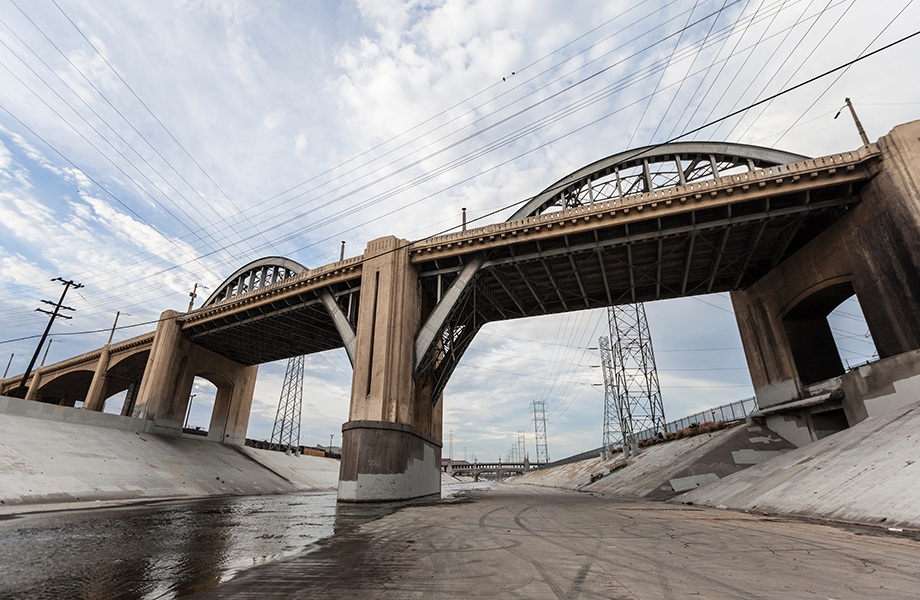
Durability: Concrete paving provides an extremely durable and resistant barrier against erosion, capable of withstanding high flow velocities.
Precise Design and Installation: Concrete can be designed and installed to meet specific project needs, ensuring a tailored solution.
Low Maintenance: Concrete Slope and Channel Paving generally require minimal maintenance, resulting in long-term cost savings.
Long Lifespan: Concrete paving offers a long lifespan, providing extended protection and reducing the need for frequent replacements.
Higher Upfront Costs: Compared to other stabilization methods, Concrete Slope and Channel Paving often involve higher initial installation costs due to material and labor requirements.
Visual Intrusion: The rigid nature of concrete can be visually intrusive, altering the natural aesthetics of the site.
Limited Vegetation Growth: Concrete does not allow for vegetation growth, reducing the area's ecological value.
Increased Runoff and Flooding: Concrete is not as permeable as other materials, potentially resulting in increased runoff and downstream flooding.
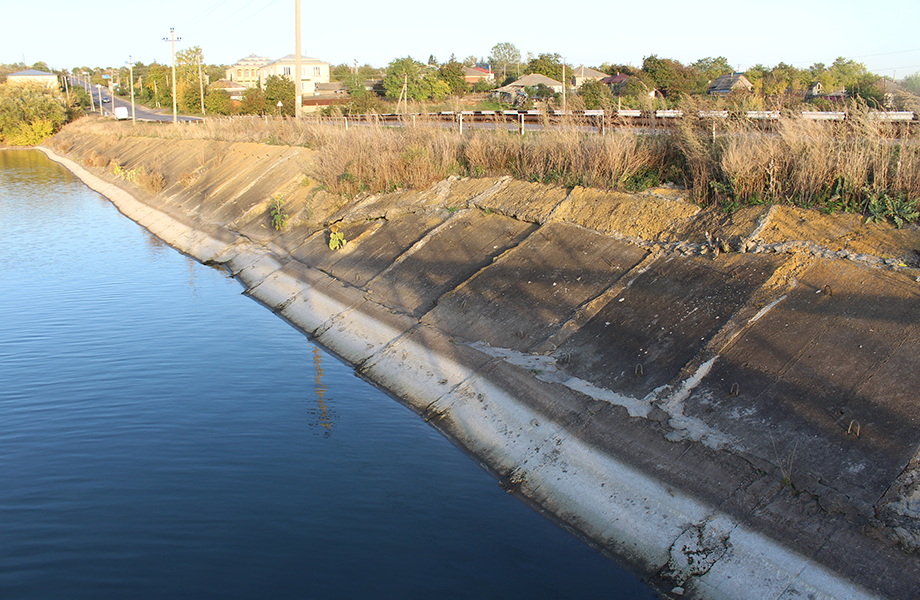
Concrete Slope and Channel Paving can be visually intrusive and not allow for vegetation growth, reducing the site's ecological value. Moreover, its manufacturing and placement require substantial energy and resources, contributing to carbon emissions. This method is also not as permeable, potentially resulting in increased runoff and downstream flooding.
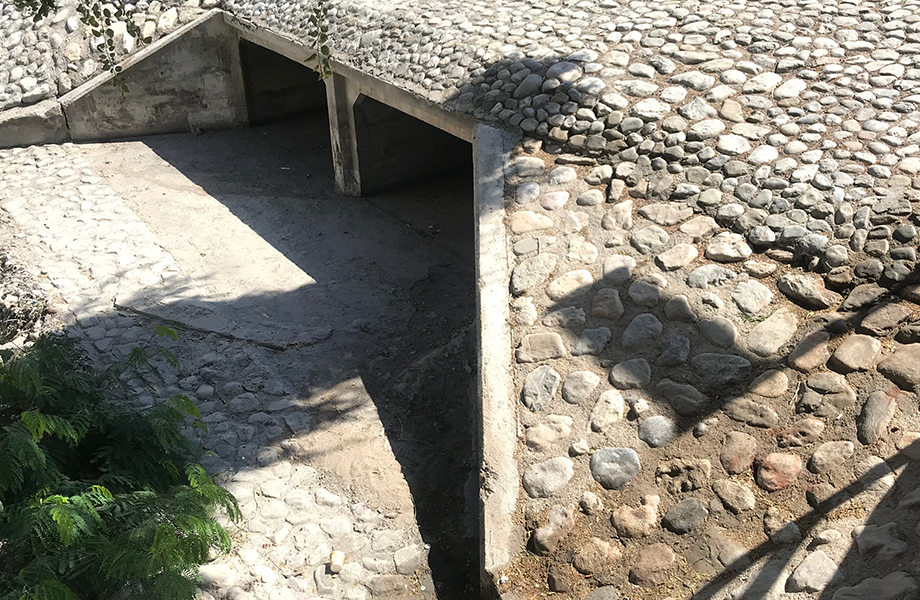
Stone rip rap and concrete rip rap are two variations of the rip rap technique, differing primarily in the materials used.
Stone Rip Rap: Stone rip rap utilizes natural stone or rubble, typically sourced locally. It offers the advantage of using readily available materials, reducing costs associated with transportation. Stone rip rap provides a more natural and aesthetically pleasing appearance, blending with the surrounding environment. However, the availability and quality of suitable stones may vary depending on the location.
Concrete Rip Rap: Concrete rip rap involves using precast concrete blocks or mats designed specifically for erosion control purposes. Concrete rip rap provides a more uniform appearance and can be manufactured to precise specifications, ensuring consistent performance. However, concrete rip rap may have higher material and manufacturing costs compared to stone rip rap.
Choosing between stone rip rap and concrete rip rap depends on factors such as project requirements, budget considerations, availability of suitable materials, and desired aesthetics. Local availability, cost-effectiveness, and the desired visual impact should be evaluated when deciding which type of rip rap to utilize in a slope or channel stabilization project.
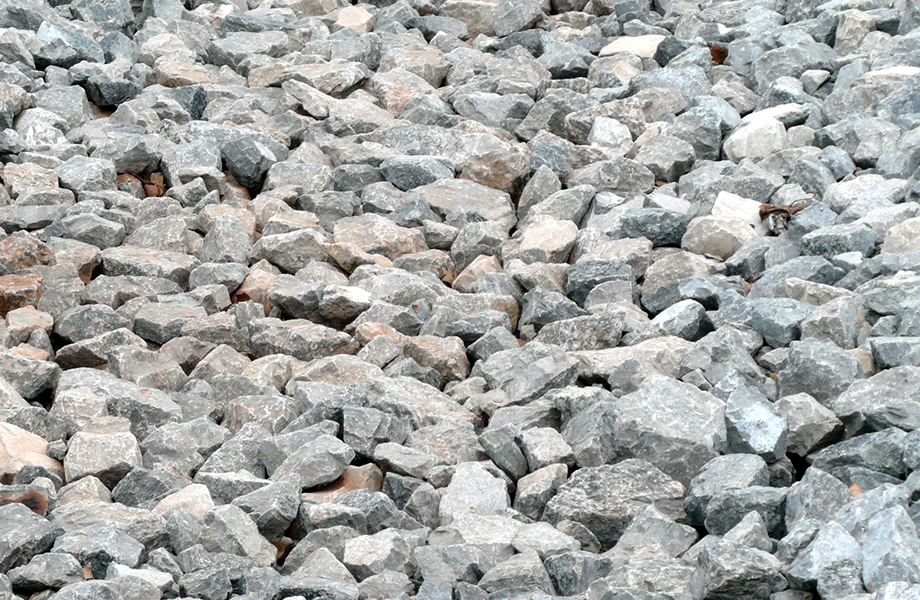
Cost-effectiveness: Rip rap is often considered a cost-effective solution for slope and channel stabilization compared to other methods. The materials used for rip rap, such as locally available stone or rubble, can be relatively inexpensive, reducing overall project costs.
Ease of installation: Rip rap is relatively easy to install, especially compared to more complex techniques like concrete paving. The large stones or rocks are placed directly onto the slope or channel surface, allowing for efficient and straightforward installation.
Flexibility: Rip rap provides flexibility in conforming to irregular terrain. The loose stones can adapt to the natural shape and contours of the slope or channel, providing a customized and effective erosion control solution.
Promotion of vegetation establishment: Rip rap supports the establishment of vegetation. The gaps between the stones allow for water infiltration and create a suitable environment for plants to grow, enhancing the ecological aspects of the stabilized area.
Water infiltration: Rip rap allows water to infiltrate through the voids between the stones, helping to manage water flow and reduce surface runoff. This can contribute to the overall management of stormwater and mitigate downstream flooding.
Maintenance and replacement: Rip rap may require regular maintenance to ensure its effectiveness. High flows, human activity, or other factors can displace the stones, requiring periodic inspections and potential repairs or replacement to maintain the integrity of the stabilization system.
Sediment and debris accumulation: If rip rap is not properly installed or maintained, sediment and debris can accumulate between the stones. This accumulation can hinder water flow, impact the stability of the slope or channel, and potentially affect water quality downstream.
Long-term stability: While rip rap provides immediate erosion control benefits, its long-term stability depends on various factors such as the quality of materials used, proper installation techniques, and ongoing maintenance. Without proper attention, the effectiveness of rip rap may diminish over time.
Concrete Slope and Channel Paving can be visually intrusive and not allow for vegetation growth, reducing the site's ecological value. Moreover, its manufacturing and placement require substantial energy and resources, contributing to carbon emissions. This method is also not as permeable, potentially resulting in increased runoff and downstream flooding.
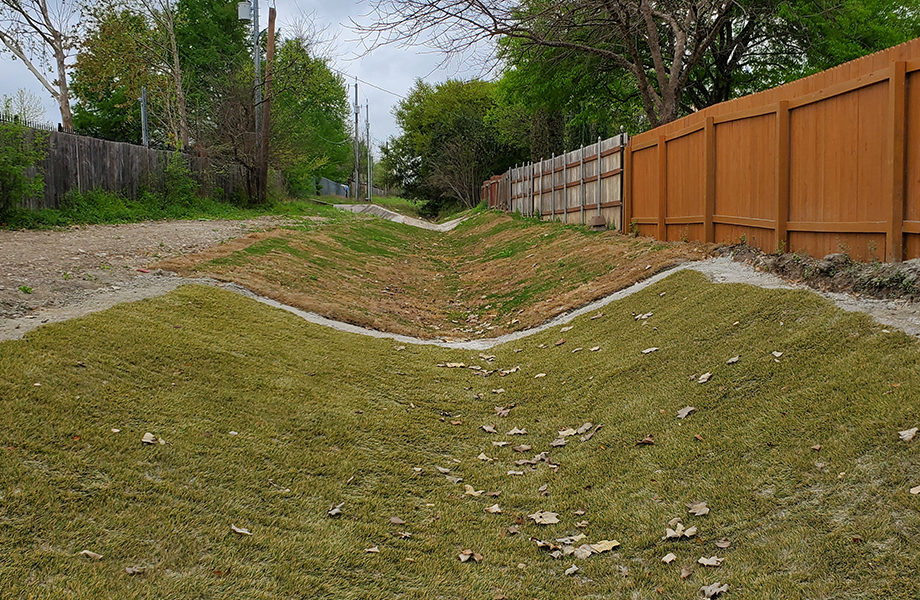
Several alternatives include geosynthetic products, such as HPTRMs, Concrete Canvas, Fabric-formed Concrete, Hydroturf, or GeoWeb. These methods can balance hard and soft armor engineering, offering the structural stability of hard armoring methods while allowing vegetation growth and maintaining ecological functions. Have a question about these products? Ask a GEO Pro
The cost of stabilizing slopes and channels with concrete paving, concrete rip rap, and stone rip rap varies depending on project specifics. Concrete slope and channel paving generally have higher upfront installation costs but lower long-term maintenance costs. Concrete rip rap's costs fall between concrete paving and stone rip rap, while stone rip rap often has lower initial material costs but potentially higher labor costs. Detailed cost estimates should consider factors such as slope gradient, surface area, concrete thickness, local availability of suitable rock, transport costs, and installation requirements.
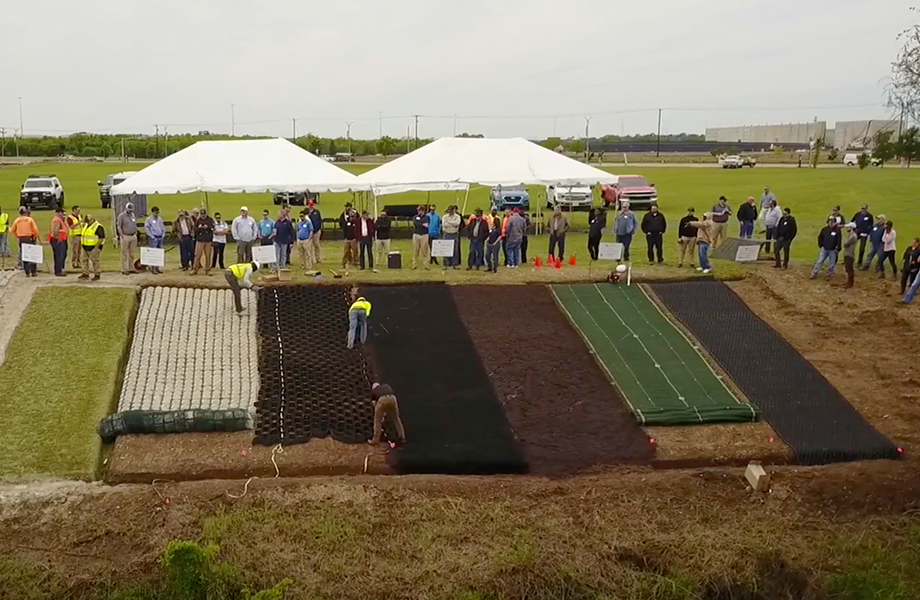
Hard armor and soft armor solutions represent two approaches to slope and channel stabilization, each with its own advantages and limitations.
Hard armor solutions use rigid or semi-rigid materials such as concrete, stone, or metal to protect the soil surface from erosion. These methods are typically used in environments with high flow velocities or significant erosion risk. They provide excellent resistance to erosion and can handle high flow velocities, making them ideal for areas with high levels of surface runoff or in channels with significant water flow.
Hard armor solutions include, but are not limited to, concrete slope and channel paving, rip-rap (large, loose stone), gabion baskets (stone-filled wire cages), articulated concrete blocks, and rolled concrete technologies. While these methods can be highly effective at preventing erosion, they often have higher installation costs and can be visually intrusive. Furthermore, they can contribute to increased surface runoff by preventing water infiltration into the ground.
Soft armor solutions, on the other hand, utilize flexible, often bio-degradable or living materials to protect against erosion while also promoting natural vegetation and habitat. They typically aim to work with natural processes to stabilize slopes or channels and can enhance a site's aesthetic and ecological value.
Soft armor solutions include turf reinforcement mats, erosion control blankets, and bioengineering techniques that use live plant materials. These methods are typically less expensive than hard armor solutions and are better suited for environments with lower flow velocities. However, they may not be as durable or effective as hard armor methods in high water flow or wave action areas.
In many projects, a combination of both hard and soft armoring techniques, known as hybrid or composite solutions, may be used to leverage the benefits of both approaches. This allows for effective erosion control while supporting vegetation growth and enhancing the site's ecological value.
The choice between Concrete Slope and Channel Paving, Concrete Rip Rap, and Stone Rip Rap for slope and channel stabilization hinges on many factors, including the specific site conditions, project requirements, budgetary constraints, and long-term sustainability goals. All methods present unique advantages and drawbacks, with Concrete Paving providing robust, long-lasting protection at higher initial costs and Rip Rap offering a cost-effective, flexible, and environmentally friendly solution with potentially higher long-term maintenance costs.
Furthermore, alternative solutions and hybrid approaches, combining the strengths of both hard and soft armor techniques, can provide effective, aesthetically pleasing, and environmentally conscious stabilization strategies. The importance of comprehensive site analysis and cost evaluation cannot be overstated, as these form the basis for making informed, sustainable, and economically viable decisions in slope and channel stabilization projects. Ultimately, this holistic and nuanced understanding of the available techniques and their implications ensures your next slope or channel project's longevity, safety, and environmental compatibility.
Learn how these essential techniques can fortify the longevity and stability of your slopes and channels, all while offering paramount protection to the environment. Discover the most effective methods to combat erosion, ensuring your projects not only stand the test of time but also contribute to ecological sustainability.
